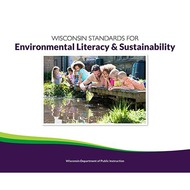5th Grade Rain Garden Design Challenge Handouts
(View Complete Item Description)These handouts accompany the 5th Grade Rain Garden Design Challenge Lesson Plan. The handouts give criteria for identifying areas of erosion and non-point source pollution entering waterways on school property, slope and soil suitability criteria for situating the rain garden, and data collection procedures for phosphate testing. The handouts also include guidelines and criteria for the final poster presentation design and Claim-Evidence-Reasoning, as well as rubrics for scoring and guidelines for peer feedback.
Material Type: Activity/Lab, Formative Assessment, Interim/Summative Assessment, Learning Task, Lesson Plan, Reference Material, Rubric/Scoring Guide, Unit of Study




